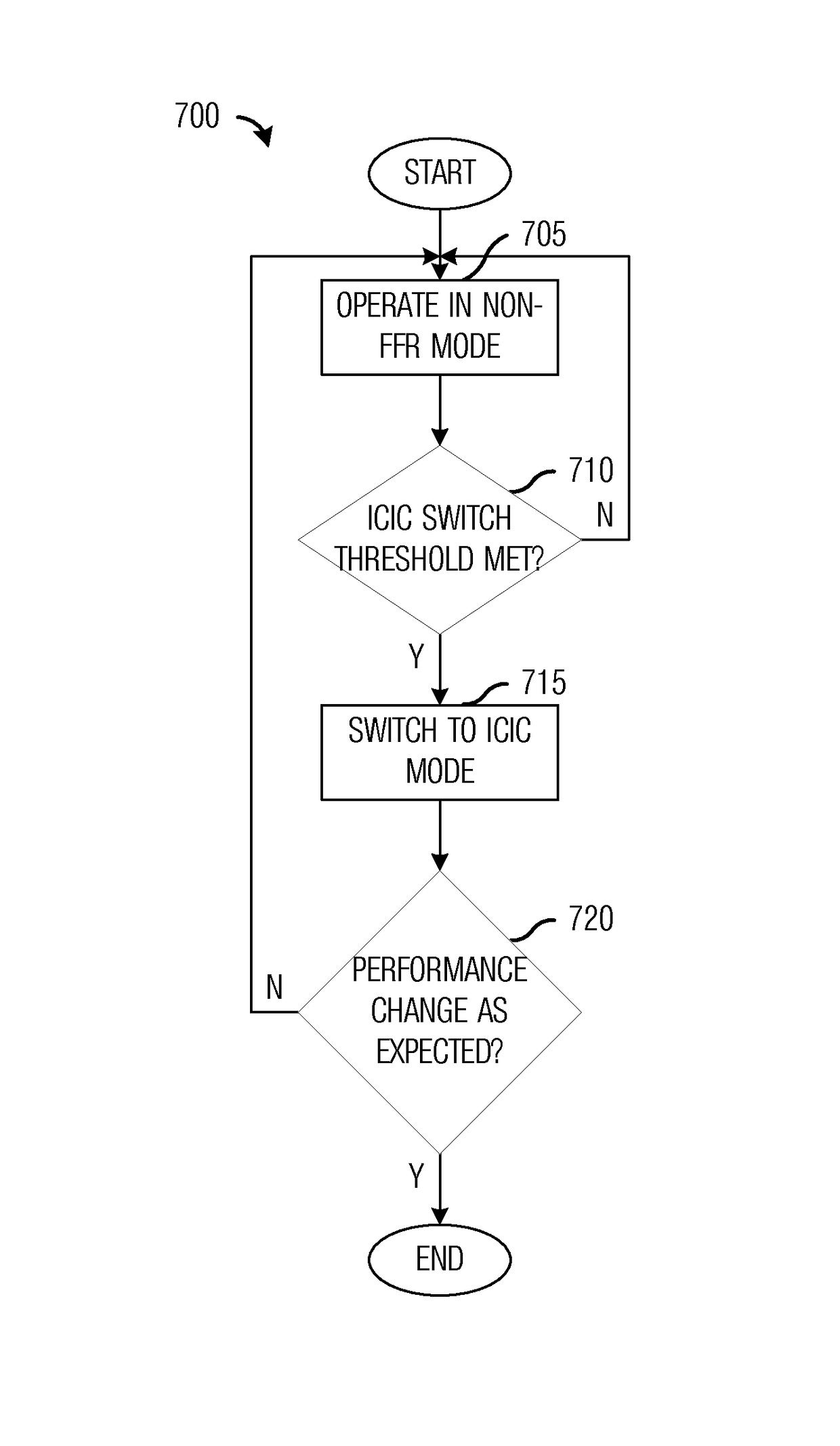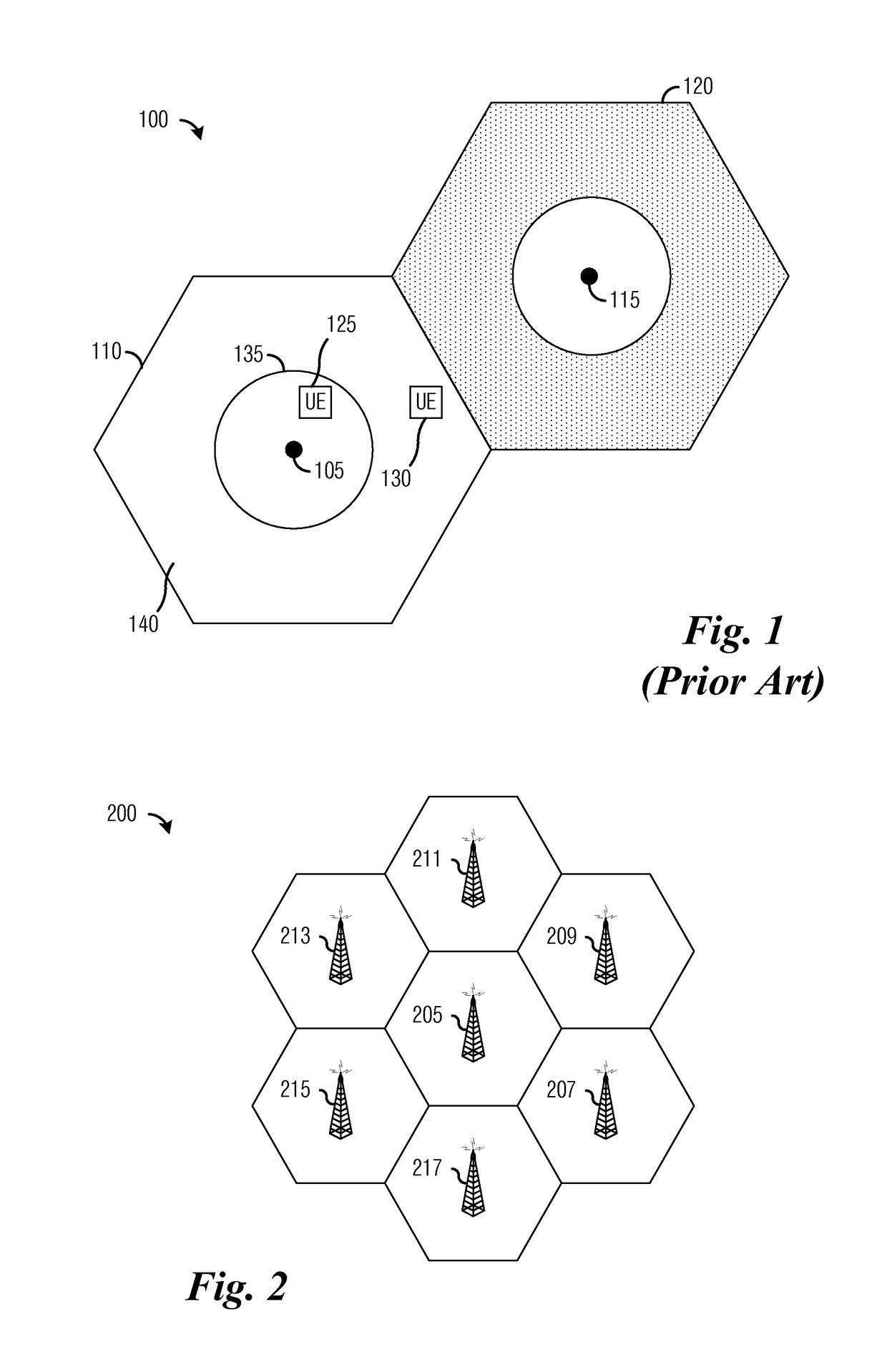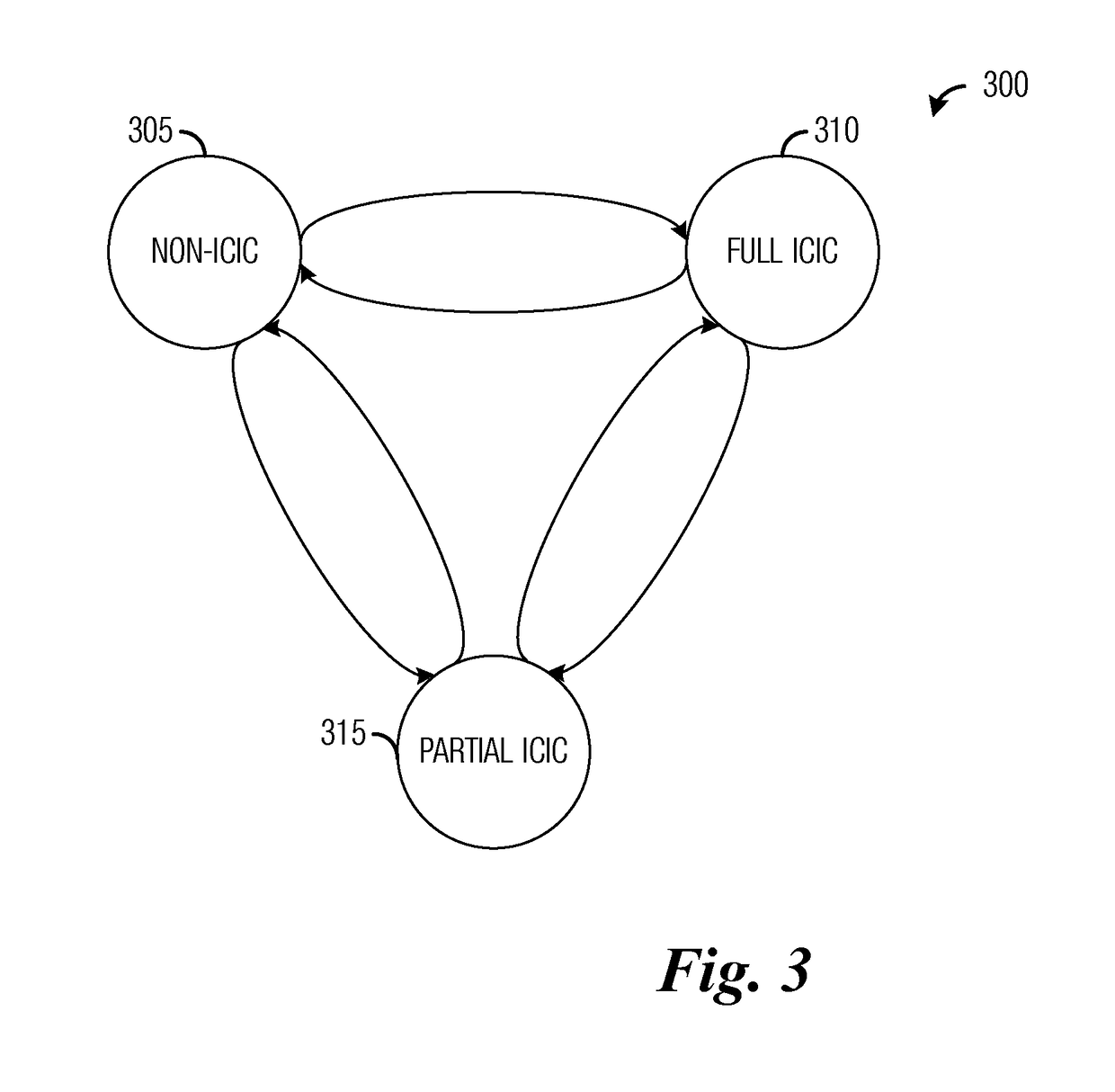System and method for operating mode self-adaptation
a technology of operating mode and self-adaptation, applied in the field of digital communications, can solve the problems of increasing interference to neighboring enbs, increasing the difficulty of communication system operating conditions over time, and avoiding labor-intensive (and therefore expensive), time-delayed and potentially error-prone manual operating mode adjustments
- Summary
- Abstract
- Description
- Claims
- Application Information
AI Technical Summary
Benefits of technology
Problems solved by technology
Method used
Image
Examples
Embodiment Construction
[0027]The operating and structure of the current example embodiments are discussed in detail below. It should be appreciated, however, that the present invention provides many applicable inventive concepts that can be embodied in a wide variety of specific contexts. The specific embodiments discussed are merely illustrative of specific structures of the invention and ways to operate the invention, and do not limit the scope of the invention.
[0028]The present invention will be described with respect to example embodiments in a specific context, namely a wireless communications system that supports inter-cell interference coordination (“ICIC”). The invention may be applied to a variety of standards compliant communications systems, such as Third Generation Partnership Project (3GPP) Long Term Evolution (LTE), 3GPP LTE-Advanced, WiMAX, IEEE 802.16, and so forth, as well as non-standards compliant communications systems.
[0029]Fractional Frequency Reuse (FFR) is an important ICIC techniq...
PUM
 Login to View More
Login to View More Abstract
Description
Claims
Application Information
 Login to View More
Login to View More - R&D
- Intellectual Property
- Life Sciences
- Materials
- Tech Scout
- Unparalleled Data Quality
- Higher Quality Content
- 60% Fewer Hallucinations
Browse by: Latest US Patents, China's latest patents, Technical Efficacy Thesaurus, Application Domain, Technology Topic, Popular Technical Reports.
© 2025 PatSnap. All rights reserved.Legal|Privacy policy|Modern Slavery Act Transparency Statement|Sitemap|About US| Contact US: help@patsnap.com



